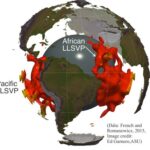2023-11-01 オークリッジ国立研究所(ORNL)
◆米国エネルギー省のオークリッジ国立研究所(ORNL)の研究者たちは、黒鉛内での塩溶液の浸透を視覚化する新しい技術を開発しました。この技術は、黒鉛の微細な孔に塩溶液が侵入する深さと分布をモニターするもので、塩溶液の侵入が原子炉運転に与える影響を理解し、溶融塩原子炉の運用基準を改善するのに役立つ可能性があります。
◆この研究は、中性子イメージングを使用して、黒鉛内での塩溶液の分布を3Dで直接可視化した初の成果を含んでいます。さらに、黒鉛の微細構造が塩溶液の浸透と分布に重要な要因であることも示しました。今後の研究では、異なる黒鉛グレードが塩溶液の浸透にどのように対応するかを予測するモデルの開発を目指し、溶融塩原子炉の運用基準を改良することが期待されます。
<関連情報>
- https://www.ornl.gov/news/researchers-demonstrate-novel-technique-observe-molten-salt-intrusion-nuclear-grade-graphite
- https://www.sciencedirect.com/science/article/abs/pii/S0008622323005031
核グレード黒鉛中のフッ化物塩(FLiNaK)侵入を可視化する中性子トモグラフィー研究 A neutron tomography study to visualize fluoride salt (FLiNaK) intrusion in nuclear-grade graphite
Jisue Moon, Nidia C. Gallego, Cristian I. Contescu, James R. Keiser, Dino Sulejmanovic, Yuxuan Zhang, Erik Stringfellow
Carbon Available online 26 June 2023
DOI:https://doi.org/10.1016/j.carbon.2023.118258
Abstract
Manufactured graphite is a preferred material for in-core components of molten salt reactors and fluoride salt-cooled high-temperature reactors, which are in permanent contact with liquid salts. However, owing to the porous nature of nuclear graphite, under certain conditions, molten salts may intrude graphite’s pores and affect graphite’s properties and functionality. Therefore, a better understanding of molten salt intrusion (distribution across sample cross section and penetration depth) is needed to assess its effects. In this work, we have demonstrated the use of neutron imaging (computed tomography) in the evaluation of salt penetration and distribution of a wide range of graphite grades with diverse microstructures that have been subjected to FLiNaK (LiF–NaF–KF) intrusion at 750 °C and 5 bar pressure for 12 h. Because of the great neutron attenuation contrast from scattering and adsorption between Li (from FLiNaK) and the graphite matrix, we have obtained direct visualization of FLiNaK salt distribution in the salt-impregnated graphites for the first time. Three-dimensional reconstructed images and cross-sectional concentration profiles demonstrate that salt penetration and density distribution are greatly dependent on the microstructural properties of the graphite grade.
Graphical abstract




